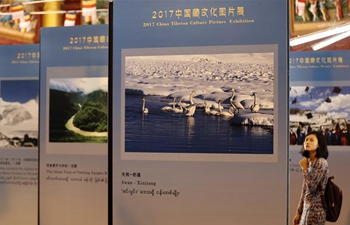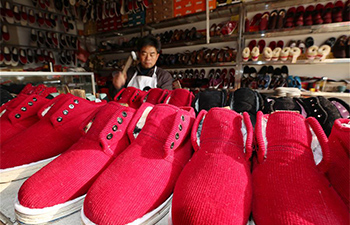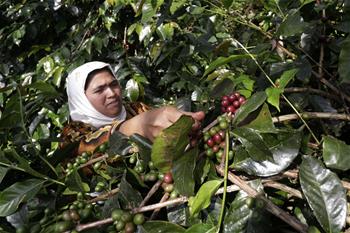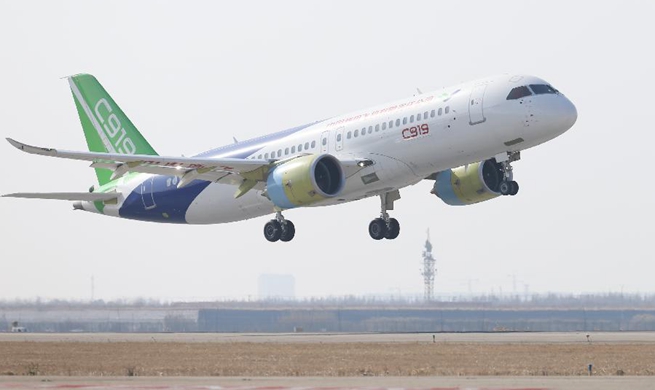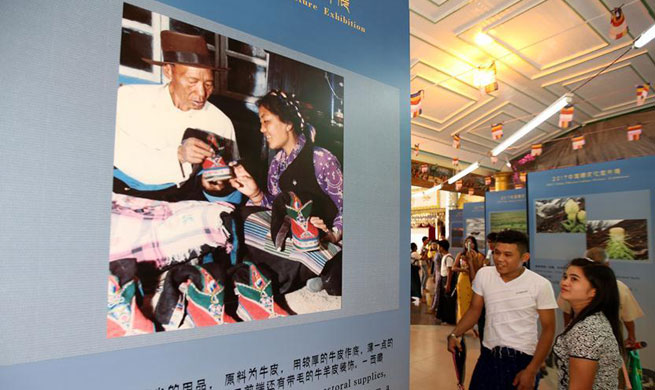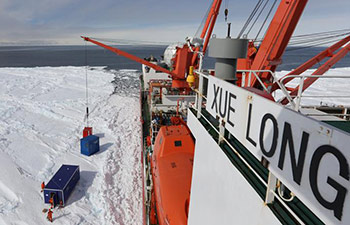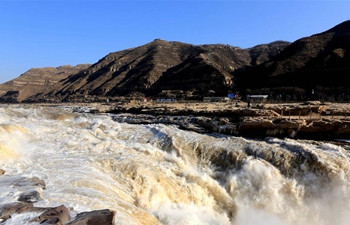HONG KONG, Dec. 18 (Xinhua) -- Despite a lackluster global economic recovery, the Asia-Pacific region has remained as the world's most economically dynamic region and the main engine of global growth, almost a decade after the 2008 global financial crisis.
RISK OF PROTECTIONISM
The global economy has shown a broad-based upswing while the World Trade Organization (WTO) forecast that global trade is expected to rebound this year.
The International Monetary Fund (IMF) said in its 2017 World Economic Outlook that global economic recovery is continuing at a faster pace. It revised up its global growth projections to 3.6 percent for this year and 3.7 percent for 2018.
However, economic policy-makers in the Asia Pacific are still facing a complex situation as they need to cope with various pressing global challenges in efforts to sustain the region's exuberant momentum.
One major task among others is to renew the spirit of free trade with the emergence of anti-globalization and anti-trade sentiments.
According to the Pacific Economic Cooperation Council (PECC) annual survey, rising protectionism is seen as the "top risk to growth of the Asia-Pacific region."
"Against the backdrop of concerns over rising protectionism, arguments for regional economic integration efforts and emphasis on pathways to achieving the Free Trade Area of the Asia-Pacific (FTAAP) and support for the multilateral trading system become even more pertinent," PECC Co-chair Don Campbell said on the sidelines of the Asia-Pacific Economic Cooperation (APEC) summit in Vietnam's central port city of Da Nang last month.
APEC can address the doubts about the benefits of globalization by complementing its work on trade with an equally robust work on social policies, such as education, social safety nets and labor market policies.
"They provide stability, certainty and a sense of forward momentum," said Campbell.
FTAAP TO BOOST REGIONAL INTEGRATION
Promoting inclusive growth in the Asia-Pacific remains as a top priority for APEC members, and the FTAAP notion has been increasingly accepted as an ideal model for boosting global trade and regional integration.
In fact, the FTAAP is not a new idea. It was first proposed in 2004 and written into the declaration of the APEC leaders' meeting in 2006. During the 2014 APEC meeting in Beijing, APEC member economies pushed forward the FTAAP process and sketched a roadmap for it.
By encompassing all 21 APEC economies through trade and investment liberalization, the FTAAP, once established, will become the world's largest free trade zone, covering 40 percent of world's population, half of global trade and 60 percent of world trade.
Experts believe that the FTAAP is an effective way to reduce the "spaghetti bowl effect" of overlapping regional trade arrangements and lower fragmentation risks.
Alan Bollard, executive director of the APEC Secretariat based in Singapore, said APEC would like to see "some improved recipes for cooking the noodles," and APEC members were testing the kitchen for trying things out.
"The FTAAP is a strategic choice for long-term prosperity of the Asia-Pacific region. It will provide institutional guarantee for our region's open economy," said Tang Guoqiang, co-chair of PECC.
Compared with other plans for a regional free trade regime, the FTAAP stresses inclusiveness, seeks greater regional integration and could unleash enormous potential for fast economic growth and balanced wealth distribution.
In his keynote address at the APEC CEO summit in Vietnam's Da Nang in November, Chinese President Xi Jinping said the building of the FTAAP has been "the long-cherished dream of the business community in our region".
"We should get into action, fully implement the Beijing Roadmap, move toward the FTAAP and provide an institutional underpinning for growing an open economy in the Asia-Pacific," the Chinese leader said.
ASEAN, DIALOGUE PARTNERS TO FACT-TRACK RCEP TALKS
In view of the large potential of the Regional Comprehensive Economic Partnership (RCEP) to promote global trade and growth, the Association of Southeast Asian Nations (ASEAN) and its trading partners have stressed the need to fast-track their negotiations on a "modern , comprehensive, high-quality and mutually-beneficial" RCEP agreement.
Ten ASEAN leaders and their six trading partners -- China, Japan, South Korea, Australia, New Zealand and India -- have reaffirmed their commitment to wrap up the 16-nation regional trade pact by next year.
At the first RCEP summit on the sidelines of an ASEAN summit in Manila in November, the 16 RCEP leaders discussed the way forward for an earnest conclusion of RCEP talks.
"We hereby instruct our ministers and negotiators to intensify efforts in 2018 to bring the RCEP negotiations to conclusion, and resolve to ensure they have the necessary support to achieve this outcome," the RCEP leaders said in a joint statement.
Duterte, who chaired the RCEP summit, said RCEP is "not simply another trade agreement but a trade deal that could provide the size and scale to unleash new potentials and write new rules of the game of the international trade order."
"Changing global economic landscape requires us to urgently bring the negotiations to a close and to create deeper trade linkages that would demonstrate our commitment to free and open markets," Duterte said.
The 16 participating countries account for almost half of the world population, 31.6 percent of global output, 28.5 percent of global trade and a fifth of the global foreign direct investment inflows in 2016, according to ASEAN data.
The 10-member ASEAN groups Brunei, Cambodia, Indonesia, Laos, Malaysia, Myanmar, the Philippines, Singapore, Thailand, and Vietnam.
RCEP, launched in November 2012, "is focusing on harmonizing rules and regulations throughout the region. Such regulatory convergence will significantly reduce the cost of doing business in the region," said Jayant Menon, lead economist of the Asian Development Bank (ADB).
Once RCEP is established, he said the next step would be to broaden it toward greater regional economic integration through the FTAAP that includes all 21 APEC economies.
"FTAAP is the only proposal so far that includes both the United States and China," Menon said.




